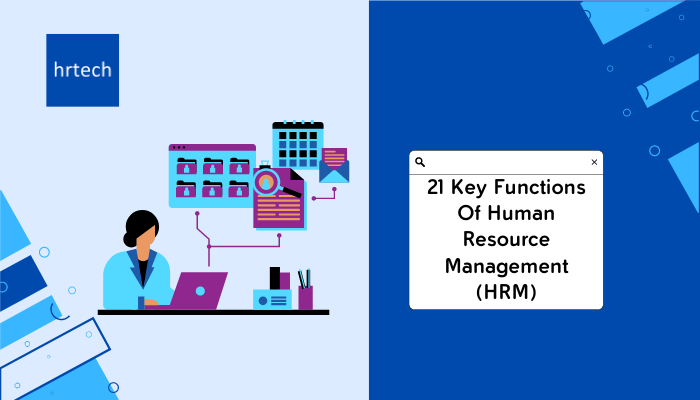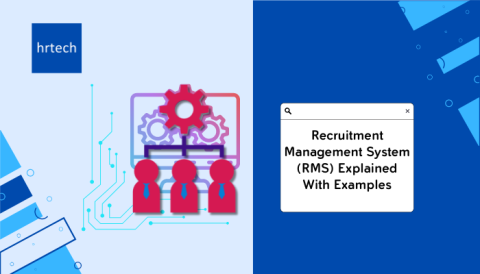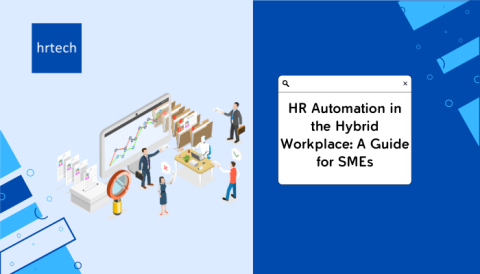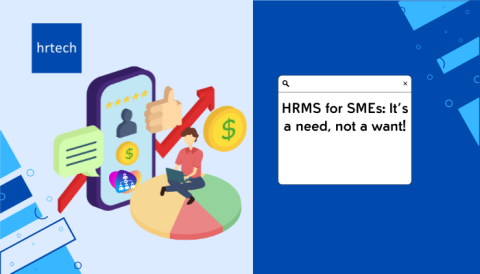Introduction
Human Resource Management (HRM) is the backbone of any successful organization. Whether it’s hiring the right talent, designing competitive benefits packages, or fostering a positive work culture—HR professionals play a crucial role in keeping everything running smoothly. But what exactly does HRM involve?
In this blog, we’ll break down the essential HR functions that together shape a productive, engaged, and thriving workforce.
What Is Human Resource Management?
Human Resource Management (HRM) is the strategic and comprehensive approach to managing people within an organization. It’s more than just hiring and firing—HRM focuses on developing and nurturing a skilled, motivated, and high-performing workforce that contributes to the company’s success.
At its core, HRM involves planning, organizing, and overseeing all functions related to people management. This includes recruiting the right talent, developing employee skills, ensuring fair compensation, handling employee relations, enforcing workplace laws, and building a strong organizational culture.
Here’s what HRM encompasses:
- Strategic workforce planning: Forecasting future talent needs to align with business goals.
- Talent acquisition and development: Attracting, hiring, and training the right people for the right roles.
- Employee engagement: Keeping employees motivated and satisfied through recognition, communication, and support.
- Compliance management: Ensuring the company adheres to labor laws and regulatory standards.
- Performance optimization: Setting goals, tracking progress, and helping employees grow through feedback and performance reviews.
- Culture and values: Shaping a positive, inclusive workplace that reflects the organization’s values and mission.
Now let’s dive into the nitty-gritty of what makes Human Resource Management so vital for any organization.
The Key Functions of HRM
Human Resource Management isn’t just about hiring and firing—it’s the engine that keeps a company running smoothly. From recruiting talent to shaping company culture, HRM handles a wide range of functions that drive growth, engagement, and productivity.
Here is a list of the important functions that the HRM performs:
1. Human resource planning
This involves forecasting future manpower needs and planning how to meet them. HR analyzes business goals, internal workforce capacity, and market trends to ensure the company has the right number of people with the right skills at the right time. It’s about preparing for expansions, retirements, or skill shortages before they impact the business.
2. Recruitment and selection
Finding and hiring top talent is one of HR’s most critical roles. This includes writing job descriptions, posting job ads, sourcing candidates, conducting interviews, running background checks, and negotiating offers. The goal is to attract qualified applicants while maintaining a positive employer brand.
3. Job analysis and design
This function ensures every role in the company is clearly defined. HR outlines the duties, skills, responsibilities, and relationships associated with each position. Well-designed jobs enhance efficiency, reduce overlap, and provide a clear career path for employees.
4. Orientation and onboarding
New hires need guidance to integrate successfully. Onboarding includes company tours, team introductions, systems training, and policy education. A structured onboarding experience can improve retention and boost productivity early in the employee lifecycle.
5. Training and development
Learning never stops. HR creates training programs—both mandatory (e.g., compliance) and developmental (e.g., leadership, software, communication skills)—to help employees improve. This fosters a culture of growth and adaptability while preparing teams for future roles.
6. Performance management
This is about tracking and improving individual performance through regular check-ins, feedback sessions, performance reviews, and development plans. Tools like KPIs, 360-degree reviews, and self-assessments are often used. A solid system motivates employees and aligns them with business objectives.
7. Compensation and benefits
HR designs total reward systems that go beyond salary—bonuses, profit-sharing, stock options, insurance, paid time off, parental leave, and retirement plans. A competitive benefits package not only retains staff but also attracts high-performing candidates.
8. Employee relations
This function fosters trust and open communication across all levels. HR handles employee complaints, investigates misconduct, and implements fair disciplinary procedures. Positive relations lead to higher morale and reduced workplace conflicts.
9. Labor relations
Where unions are involved, HR negotiates collective bargaining agreements, manages industrial disputes, and ensures compliance with labor contracts. Effective labor relations maintain operational harmony and reduce the risk of strikes or litigation.
10. Workplace safety and health
HR ensures the workplace is safe and compliant with health and safety regulations. They also promote mental health initiatives, ergonomic workspaces, first-aid training, and emergency protocols. A healthy workforce is a productive workforce.
11. Succession planning
To avoid disruptions when key staff leave, HR identifies high-potential employees and develops them for future leadership roles. This might include mentorship, stretch assignments, and leadership development programs.
12. HR Information Systems (HRIS)
Modern HR relies on technology to automate tasks and analyze data. HRIS platforms manage payroll, track attendance, store employee data, and generate reports. This boosts efficiency and allows data-driven decision-making.
13. Compliance with labor laws
HR ensures all employment practices comply with laws regarding wages, working hours, discrimination, harassment, leave entitlements, and more. Regular audits and training sessions help minimize legal risks and protect both the organization and employees.
14. Diversity and inclusion
HR champions DEI by promoting equal opportunities, eliminating bias in hiring and promotions, and building inclusive policies. Diverse teams bring innovation, improved problem-solving, and better representation in decision-making.
15. Employee engagement
An engaged employee is more likely to stay, perform well, and promote the company. HR conducts engagement surveys, develops recognition programs, and organizes events and wellness activities to maintain high morale.
16. Change management
During transformations like mergers, restructuring, or tech adoption, HR manages communication, training, and support to help employees adapt. Their role is to minimize resistance and keep morale high during uncertain times.
17. Policy development
HR creates clear, fair, and up-to-date policies covering everything from remote work to anti-harassment rules. They also ensure these policies are communicated effectively to all employees and consistently enforced.
18. Employee retention
Keeping talent is more cost-effective than hiring new people. HR monitors turnover trends, conducts exit interviews, and introduces retention initiatives such as flexible work, growth opportunities, and strong internal communication.
19. Organizational development
HR uses OD strategies like team-building, workflow improvement, and cultural change to boost efficiency and align people with business goals. It’s about creating an agile, future-ready workforce.
20. Conflict resolution
Conflicts happen—but HR ensures they don’t escalate. They mediate disputes fairly and professionally, whether between employees or between staff and management, promoting a respectful and solution-oriented culture.
21. Talent management
This is an umbrella function covering everything from recruitment to retention. It ensures that every stage of the employee journey is optimized—so the company gets the best out of its people, and people get the best from the company.
Just when you thought you had it all figured out, let’s explore some exciting trends that are shaking up the HR world.
Emerging Trends in HRM
HRM is evolving fast in 2025. Here are the top trends reshaping the field:
- AI in HR – AI is streamlining recruitment, resume screening, employee queries, and predictive analytics—saving time and improving decision-making.
- Remote & hybrid work – Flexible work models are the norm. HR focuses on policies, productivity tracking, and remote team management.
- Employee well-being – Mental health, wellness programs, and real-time feedback are key to boosting engagement and retention.
- Skills-based hiring – Skills and certifications are prioritized over degrees. Upskilling and internal mobility are gaining importance.
- DEI as strategy – Diversity, equity, and inclusion are business essentials—backed by data, inclusive hiring, and internal programs.
- Data privacy focus – HR must ensure compliance with privacy laws like GDPR, using secure HR tech and proper data handling practices.
- Agile & continuous feedback – Static reviews are out. Agile HR and ongoing feedback systems improve performance and adaptability.
Conclusion
Human Resource Management is far more than just administrative work. It’s a strategic partner in building a strong, capable, and engaged workforce that drives business success.
Whether you’re an HR professional, business leader, or aspiring HR student, understanding these 21 key HR functions gives you a comprehensive view of how vital HRM is to organizational growth.
Looking to improve your company’s HR strategy? Start by focusing on these essential functions—and watch your team thrive.





